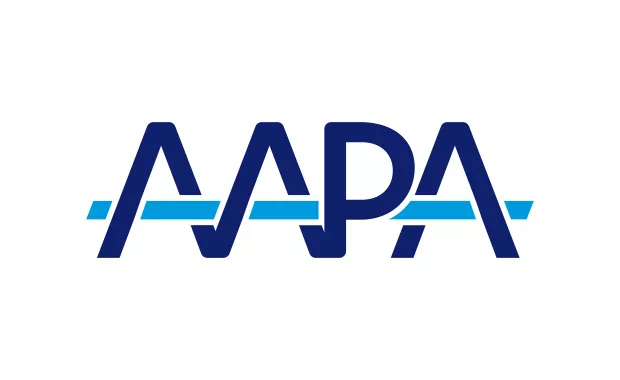Unlocking the Value of Nutrition in Your Practice
Nutritional Considerations Critical During and After Hospitalization
August 21, 2020
SPONSORED
At AAPA’s 2020 Leadership and Advocacy Summit, Suela Sulo, PhD, MSc, Director, Global Health Economics and Outcomes Research & Policy, Abbott Nutrition, discussed PAs’ important role in nutrition care and in supporting healthcare metrics and key performance indicators that are critical for patient health. During her presentation, Sulo demonstrated that, “nutrition interventions are associated with improved patient outcomes,” and suggested that institutions need to “foster a culture of nutrition care and engage institutional support departments.”

AAPA invited PA and registered dietitian, Matthew Wright, MS, PA-C, RD, lecturer at Rutgers University School of Health Professions PA Program, to comment on the research, nutrition care upon hospitalization and discharge, and calls to action for PAs.
The cost of malnutrition during patient hospitalization
According to Health Economics & Outcomes Research (HEOR), 30 to 50% of patients are malnourished upon hospital admission and 38% experience a decline in nutrition status during hospitalization. Unrecognized poor nutrition is associated with the costly consequences of increased readmission rates, cost of care, higher complication rates and increased morbidity/mortality, among other things. Malnutrition is a costly healthcare problem at $157 billion for disease-related malnutrition; $51.3 billion is the total annual burden from disease-related malnutrition in the elderly. Nutrition intervention is an important but often overlooked step in the care process.
A retrospective health economic analysis studied the impact of oral nutritional supplementation (ONS) provided during hospitalization. A large health economics study showed that ONS during hospitalization was associated with improved outcomes such as 21% decrease in length of stay, 21.6% decrease in episode costs and a 6.7% decrease in probability of 30-day readmission. ONS was also associated with outcomes and reduced hospital costs in Medicare patients, including those with Acute Myocardial Infarction, Congestive Heart Failure, Pneumonia, and Chronic Obstructive Pulmonary Disease.
[Read more about Nutrition Resources]
Asked what providers should consider related to nutrition as they admit and discharge patients, Wright said, “Healthcare providers should be aware of the signs and symptoms of malnutrition, as well as the implications on morbidity and mortality. Identification of those in need of a nutritional intervention and subsequent dietary consultation will aid in reducing length of hospital stay and the likelihood of readmission upon discharge. In discharge planning healthcare providers should include recommendations for outpatient nutrition follow up visits, and dietary guidance to be considered by the outpatient primary care or specialty provider. Outpatient follow up nutrition management will assure patients continue recommended therapies from their admissions, and reinforce optimal intake patterns.
Wright added, “Nutritional supplements aid in enhanced recovery pathways by promoting increased protein and calorie intake perioperatively to minimize the risk of malnutrition. Depending on the reason for surgery, patients may not be able to consume adequate calories and protein with meals to meet their heightened operative needs. Liquid oral nutrition supplements support dietary intake providing easily digestible protein sources and additional calories to support the physiologic stress of their procedures. Concurrently, oral nutrition supplements enhance immune function and promote proper wound healing.”
Research demonstrated that an investment in providing nutrition therapy can help generate a positive return. A $1 spend on ONS can equal $52.63 savings in net episode cost1.
Also during her presentation, Sulo called for healthcare providers to transform the hospital environment and clinical action, including the following principles. Wright added the PA perspective to each.
- Create a culture that embraces nutrition
“Creating a culture supportive of nutrition involves input from multiple specialties and departments. Up-to-date education should be provided to practicing providers who routinely provide perioperative medical care regarding enhanced recovery pathways. Subsequently, new developments in pre- and post-surgery nutritional management should be incorporated into surgical planning and treatment. Providers who routinely provide pre-admission testing or medical clearance should educated on the benefits of enhanced recovery, and consideration should be taken for malnutrition screening tools for EHRs.”
- Redefine clinician’s roles to include nutrition
“PAs have an opportunity to directly improve patient outcomes by incorporating malnutrition screening and therapeutic nutrition recommendations in their perioperative patients. As a part of the pre-surgical clearance visit, specific attention should be paid to nutritional status by efforts to identify concerns for malnutrition. Specific questions in the patient history should involve recent unanticipated loss or weight, muscle or fat as well as decline in function. Concurrently, PA’s should identify signs of muscle wasting on physical exam. Laboratory values to consider are albumin and pre-albumin levels, which are not specific to nutrition but low levels are strongly associated with poor surgical outcomes.”
- Communicate nutrition care plans
“As part of the routine patient assessment and plan, nutritional status should be specifically addressed with therapeutic planning directly started prior to and after surgery.”
- Recognize and diagnose all patients at risk
“As mentioned above, all providers should be aware of risk factors associated with malnutrition as well as signs and symptoms indicative of malnutrition.”
- Rapidly implement interventions and continue monitoring
“This should be considered upon hospital admission history and physicals performed by the admitting team. To reduce morbidity, as well as length of stay and possibility of readmission, therapeutic nutrition planning should be considered at the point of admission.”
- Develop discharge nutrition care and an education plan
“As stated above, discharge nutrition care should involve specific recommendations for follow up by the primary care provider, as well as outpatient dietitian follow up as needed for the patient. Frequently patients require nutritional interventions continue well beyond the hospital admission. This is certainly the case with surgical patients, who in the best of cases often require elevated protein consumption up to two weeks beyond admission. Follow up care will increase the likelihood these needs are continually being met with the provision of additional counseling, as well as perhaps the prescription and procurement of supplements.”
[Find Patient Education Resources Here]
Malnutrition screening tools a wise investment
Facing a high rate of patient readmission, Advocate Health Care did a Hospital Quality Improvement Program (QIP) Study Overview. Advocate conducted a study with a basic and enhanced program. 45.2% of patients entering were at malnutrition risk. The first principle was integration into their EHR of a Malnutrition Screening Tool (MST) to screen patients’ nutritional status. It had three questions and took less than five minutes.
Advocate observed reductions in readmissions and length of stay in their QIP Basic and QIP Enhanced programs. They assessed a 6-month cost savings of $4.9 million or net savings of $3,800 per patient. All subpopulations benefited from the nutrition-based QIP.
“Malnutrition screening tools,” according to Wright, “are a wise investment for implementation into electronic health records, particularly with regards to perioperative nutrition planning. Screening programs incorporating patient data obtained from health records will provide supporting evidence for a malnutrition diagnosis, and reinforce decisions to engage in more aggressive nutrition management. With the latest evidence that enhanced nutrition recovery pathways reduce length of hospital stay, readmission, and improve surgical outcomes, screening tools may ultimately impact reductions in morbidity and patient mortality.
Malnutrition post hospital discharge
There is also opportunity to look beyond hospital stays. One in four patents leaving the hospital are still at risk for malnutrition. An Advocate Transitions of Care Study enrolled 1,546 patients, around 80% were over age 65 with common diagnoses of CHF, AMI, and other diseases.
The Advocate Health Care QIP was to identify and educate patients order nutritional supplements and follow up with a phone survey. They followed patients for 90 days. Findings were reduced hospital readmissions, cost savings of $2.3 million or per patient savings of $1,500.
There is constant interplay between poor nutrition in the hospital and in the community. One in four individuals ages 55+ were at malnutrition risk. Predictors of high nutritional risk are minority females who eat alone, with high ER use, taking many prescription drugs.
Nutrition interventions associated with improved patient outcomes
Nutrition interventions are associated with improved patient outcomes. Use of meal replacements as part of lifestyle intervention resulted in significant health economic outcomes: 11% reductions in annual hospitalizations; 15% reduction in length of stay; 6% reduction in number of medications; and $5,820 cost savings over 10 years.
Abbott Nutrition did a focused collaboration with 63 healthcare providers at 18 outpatient clinics. Afterwards they assessed providers’ comfort level, educated them about nutrition initiatives, and found significant improvement in healthcare providers after nutrition initiatives.
Calls to action for PAs:
Nutrition care at your institution:
- Be aware of opportunities to foster a culture of nutrition care to enhance value for your at-risk/malnourished patients
- Engage institutional support departments such as quality, information technology, medical education, supply chain and research
Successful nutrition programs at your institution:
- Foster a culture of nutrition care
- Promote multidisciplinary teamwork
- Empower clinicians and provide continuous education
- Monitor and adjust the process to ensure continuous value to patients
- Sustain effective nutrition care processes over time and inform scalable models of care for others to learn from and adapt
Source, 1- Philipson et al. 2013 and Data on File
In addition to his position at Rutgers University School of Health Professions PA Program, Matthew Wright, MS, PA-C, RD, serves as a faculty member for the PA Foundation Nutrition Outreach Fellowship. Contact him at [email protected].
Preview – Coming next month!
A pilot study was just published in BMJ Open Diabetes Research & Care called The use of a diabetes-specific nutritional shake to replace a daily breakfast and afternoon snack improves glycemic responses assessed by continuous glucose monitoring in people with type 2 diabetes: a randomized clinical pilot study.
In September, check out News Central for a review of this study. The pilot study from Abbott followed patients who remained on their typical or real-life diet and were asked to replace their usual breakfast and one afternoon or nighttime snack with diabetes specific nutrition. Among other results, the study demonstrates that small daily dietary changes like this can have a significant impact on glycemic response after meals.
You May Also Like
Optimize Nutrition to Support a Healthy Immune System
Asking Patients About Nutrition Can be as Sensitive as Asking About Sexual Health
PA Foundation Announces Nutrition Outreach Fellows
Thank you for reading AAPA’s News Central
You have 2 articles left this month. Create a free account to read more stories, or become a member for more access to exclusive benefits! Already have an account? Log in.



